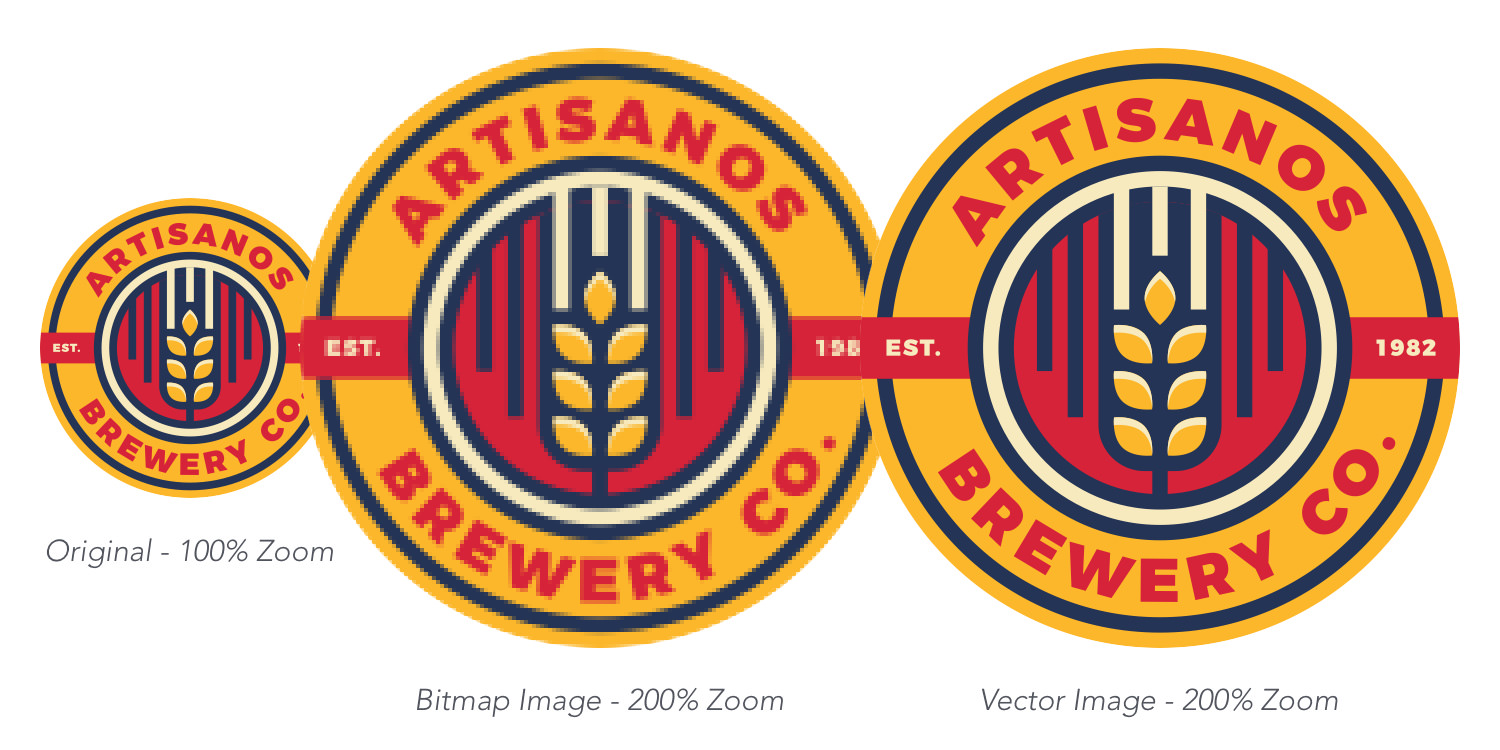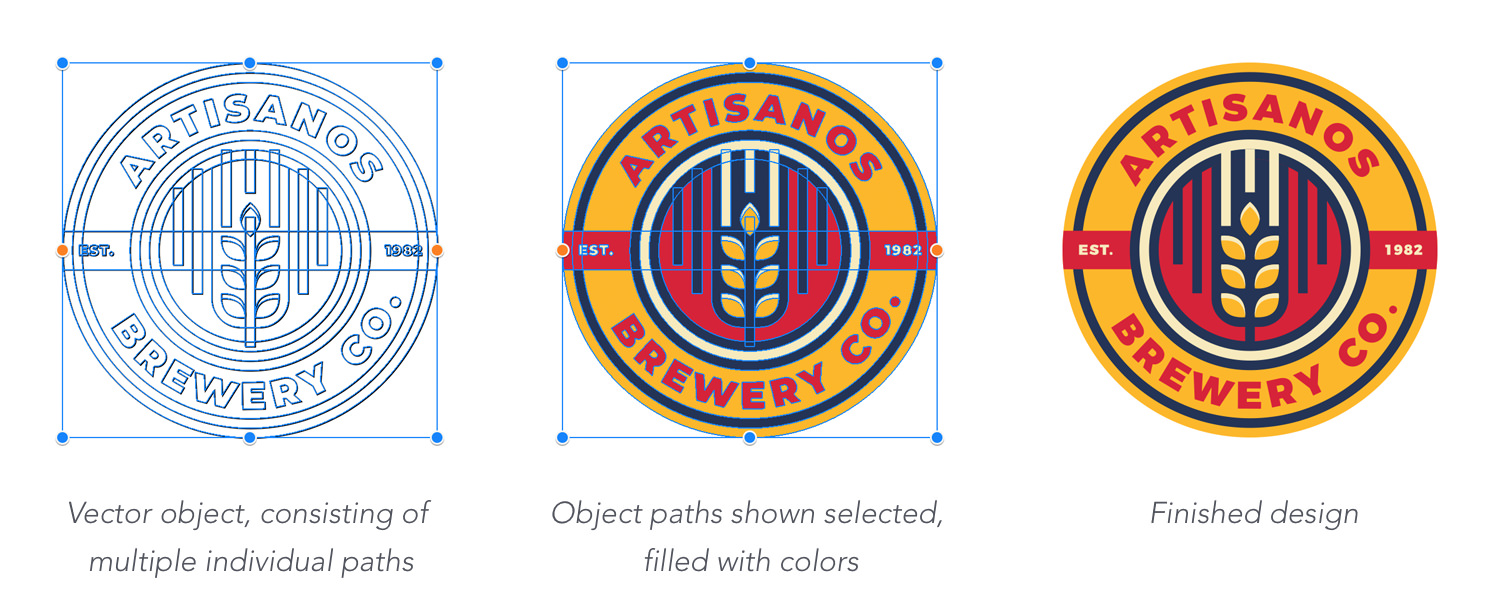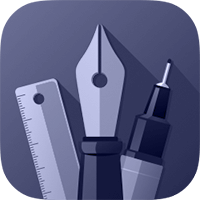What are Vector Graphics?
Unlike bitmap drawing applications, which focus on editing the individual pixels of an image, vector designs are created using objects and paths. Vector paths – consisting of points, lines, and curves – can be painted and filled. Multiple paths can be used together to create detailed intricate objects, while multiple objects can then be arranged to create a larger design.
A vector image remains crisp when enlarged, without any loss of quality. A bitmap version of the same image loses quality when enlarged.

One of the many benefits of vector drawing is that each drawn object remains fully editable throughout the entire process of creating a design. Object paths are always modifiable, while the colors and fill styles applied to a path can be changed at any time to alter the look of a design.
This is in contrast to bitmap painting applications, in which each drawing tool directly changes the pixels of an image. For example, modifying the color of a brush stroke in a bitmap painting after it has been drawn is not possible without redrawing that portion of the design.
Vector illustrations are resolution-independent. Objects, or entire designs, can be resized to larger or smaller sizes without any loss of quality.

Even if you are unfamiliar with vector drawing this guide will help you become comfortable with creating your own designs using the various tools and features available in Graphic.
Next: Documents >


